Shaping the Future of Medicine – 3D Printed Heart Case Study
BACKGROUND
Circulatory system is responsible for a proper flow of blood throughout the organism. The heart pumps oxygenated blood to the body’s organs, and deoxygenated blood to the lungs. Heart’s valves regulate the flow. Alas, the system can be defective, for example one of the valves might be congenitally narrowed causing a reduced flow of blood to the lungs. In this case study, we’ll focus on the advancements in the treatment of late sequelae of tetralogy of Fallot – a complex congenital heart disease.
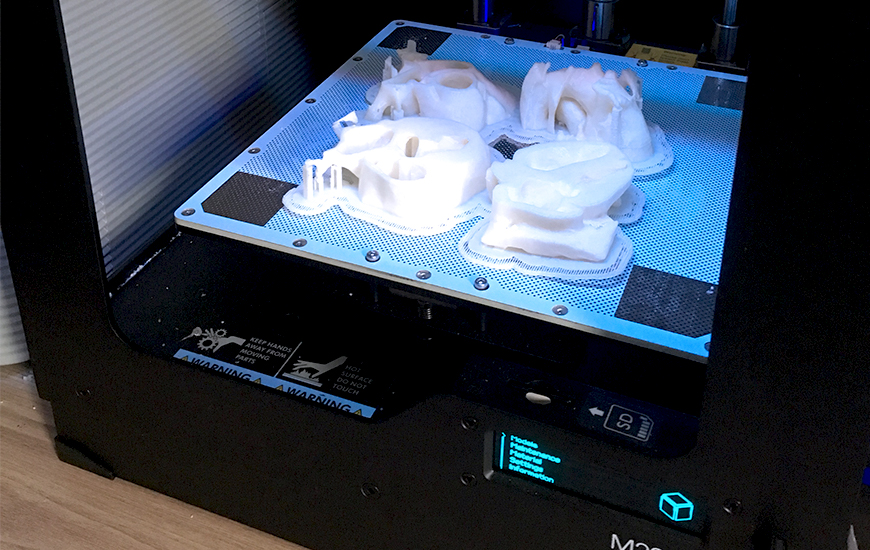
Heart model in Zortrax M200 3D printer
Recently, specialists from the Department of Pediatric Cardiology and Congenital Heart Diseases together with the colleagues from the Departments of Cardiac Surgery and Radiology at the Medical University of Gdańsk in Poland have successfully introduced a new procedure. They were challenged with a problem of a significant narrowing of pulmonary homograft (prosthesis) previously operated for tetralogy of Fallot, since the next similar surgery would be considered a high-risk. The alternative, the new method of treatment is the implantation of an artificial valve through the femoral vein. The catheter carrying the new valve is usually inserted by making a small incision on a patient’s leg and guided up to the heart’s defective area. That’s the theory, but in practice the procedure is very taxing and requires a lot of experience. Until now, the doctors planning it had to rely on grainy MRI or CT scans.
GOAL
The goal of the team of specialists from Gdańsk was to make the percutaneous procedure safer and better planned. The team of Jarosław Meyer-Szary MD, Robert Sabiniewicz PhD and the head of the Department Joanna Kwiatkowska PhD supported by cardiac surgeons and radiologists were looking for a more reliable method of planning and simulating of the operations. Before going any further, it’s important to understand the current state of medical imaging. Even though, the most popular techniques like echocardiography (ECHO), computer tomography (CT) or magnetic resonance imaging (MRI) are well established as standard practice, they all have their own shortcomings. The images are usually presented on a flat computer screen, while the navigation is based on a mouse and keyboard interface. Even though, it’s fast and fairly intuitive, digital reconstruction is not enough to fully represent spatial relations and various complexities in all cases. The clarity of information gathered during examination is crucial for the planning. Noteworthy, there used to be no reliable method of creating a tangible model of living patient’s organs. Models done postmortem are of no use, as they could only serve educational purposes. All has changed with the rise of 3D printing technology.
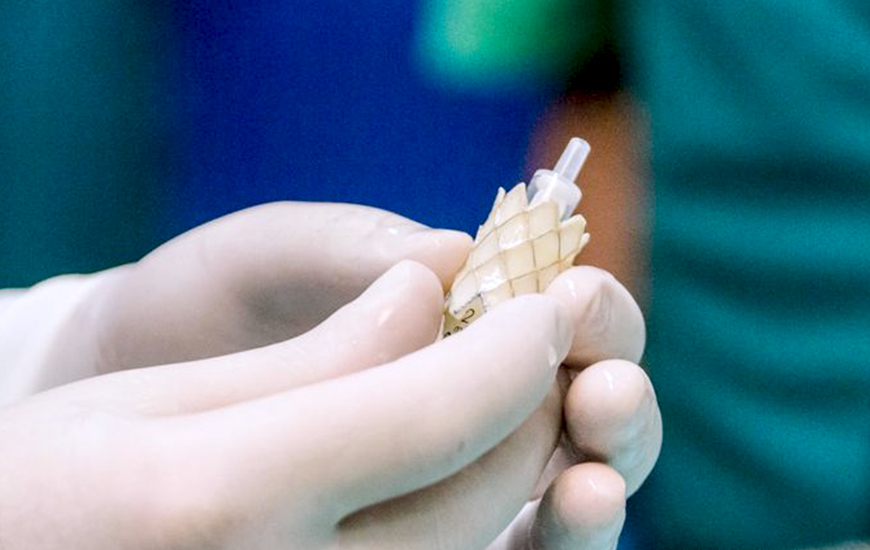
Pulmonary valve
At the beginning, a 3D printer was considered only as an efficient medium for creating educational models for students. Nevertheless, even experienced surgeons soon realized the potential of the device. What used to be hard to spot and confined to a computer screen, became tangible and available for closer inspection. It’s particularly true regarding rare conditions and deformations. After a period of making teaching aids, the specialists have started to make models of actual medical cases.
PROCESS
The starting point of every organ’s model is the same – CT or MRI scan. The cardiologist defines the area of interest and the radiologist sets up the scanning parameters. The grainy and crude shape of the scanned area must be rendered free of all noise and artifacts. It’s extremely important to remove all redundant elements, as they might distort the model. Although, there are some algorithms that help with the removal, the majority of it must be done by a skilled physician. However helpful, programs are still prone to error.
Next comes the elimination of bones, soft tissues and parts of the organ that are irrelevant. This process is called segmentation. Isolating the area of interest requires not only an anatomical knowledge, but also an insight into the patient’s case. After all, the model’s role is to answer certain questions. The whole process usually takes a couple of hours, all depending on the resolution of the image and its complexity. It is considered the most difficult part of the model’s creation.
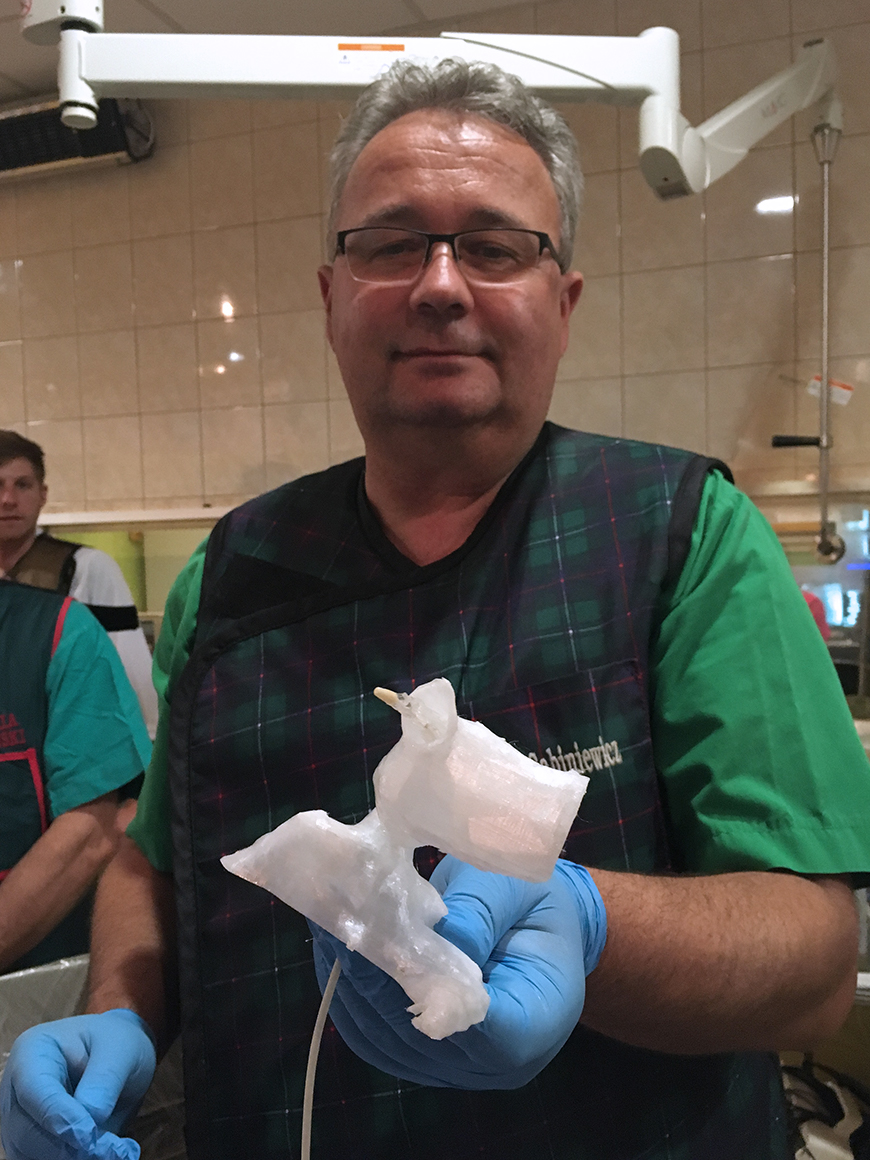
After final refinements in a 3D modeling program, models are sent to Z-SUITE software. Easy and intuitive, the software leads the creators through the preparation process. No advanced know-how is required, as all parts of Zortrax Ecosystem are designed to work together seamlessly. With the model ready and sliced, Zortrax M200 begins its work. Printing time depends on the model and chosen material. In the case of educational models, the specialists choose Z-ULTRAT, as it’s durable and long-lasting. Furthermore, a wide range of its colors allows to print complex models showing multiple layers of organs of the system. For the stenosed pulmonary homograft Z-GLASS material was used, because of its semi-transparent characteristic. It greatly facilitated the work during the operation’s simulations.
RESULT
The experience gained while making tutoring tools, helped the team in mastering the technique. Now, they are able to create the models within 24 hours, truly in accord with the ideals of rapid prototyping. There’s more to the model’s use for planning purposes. To begin with, designing of the implants is considerably easier. Operations became safer, faster and based on detailed information. Furthermore, they help specialists to explain the procedure to patients and their families. It’s essential, as it not only promotes knowledge about the patient’s condition, but also helps to understand the difficulties and complexity of the proposed treatment methods. For many, such a demonstration has a soothing and reassuring effect. After procedures, models serve students during the courses. The specialists from the Medical University of Gdańsk already have quite a collection. Its value is hard to measure, as such aides were unavailable before.
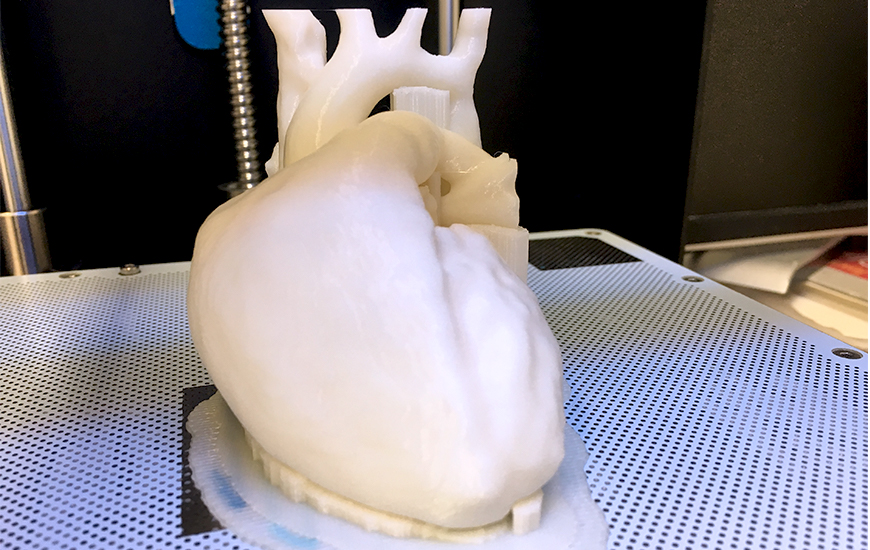
3D printed heart model of 4-year-old born with a complex congenital heart defect. It is invaluable for teaching students or explaining parents what is the problem with their child’s heart
CONCLUSION
A successful operation, deeper understanding of human anatomy and peace of mind – those are three major achievements of the team from Gdańsk. Zortrax M200 helped them make a complex procedure a little easier and more comprehensible. Furthermore, the growing catalogue of models allows teachers to prepare future physicians. While anatomically correct models are commonly available, replicas of organs altered by diseases are hard to come by. Interestingly, recently introduced external materials feature of Z-SUITE spur the next idea. With a flexible material, a specialist could create models that closer represent the organ’s structure and composition. Fortunately, they no longer have to experiment with third party materials.
All because of the unique features of Zortrax Inventure. Highly precise and outstandingly reliable, the newest 3D printer in Zortrax portfolio, is dedicated to all demanding professionals. But, what really makes it exceptional, is the material range. Zortrax Inventure prints using two extruders, one for the base and the second for support material. Support structures printed by Zortrax Inventure allow for creation of uniquely complex models due to being dissolvable in water. In addition, hollow objects, like for example the veins or arteries, require little to none post-processing to achieve. 3D printed models are simply placed inside the DSS Station and after a while, they are rendered free of all support structures.
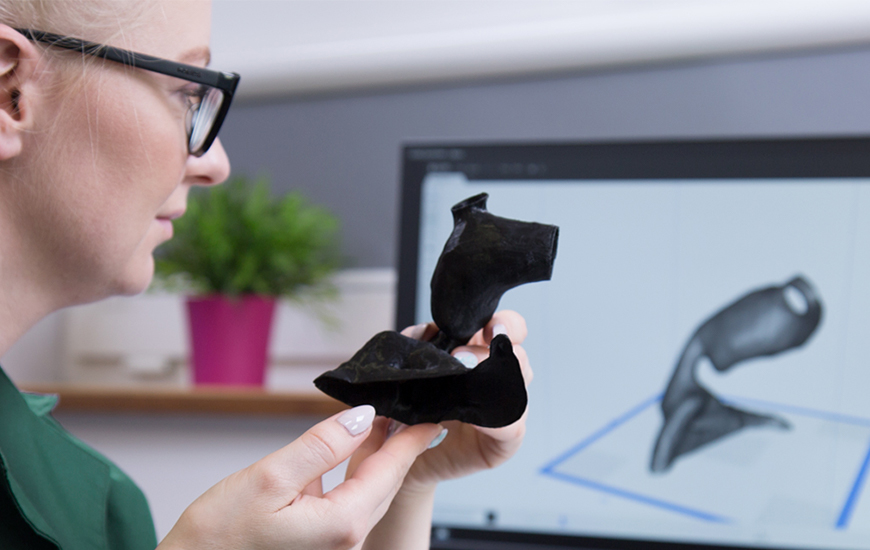
Narrowing of pulmonary homograft 3D printed with Z-SEMIFLEX 3D material
That alone makes Zortrax Inventure an ideal device for making intricate objects, but recently the 3D printer gained new exclusive capabilities. Particularly important to the medical specialists, Z-SEMIFLEX material was added to its material range. Based on TPU-98A, the material is a combination of rubber and plastic. It is elastic enough to squeeze but it also comes back to its original form. At the same time, it is highly resistant to abrasion and tearing. Z-SEMIFLEX material is a solution for making models requiring flexibility and durability. Thus, it might replace the stiff materials previously used for making models of human organs.